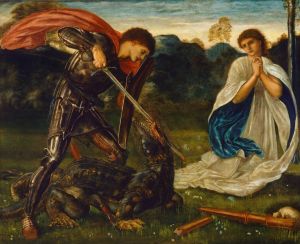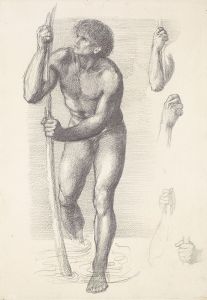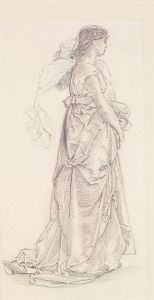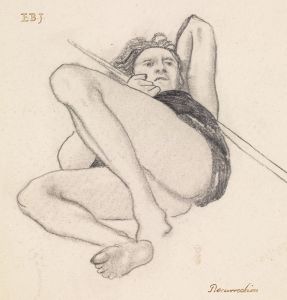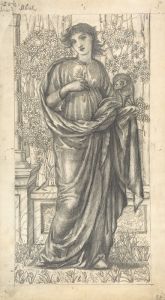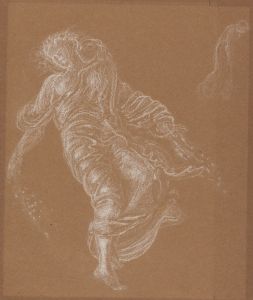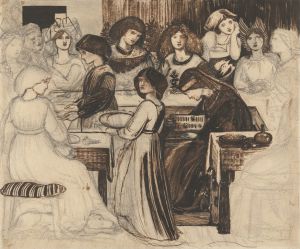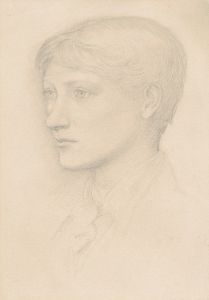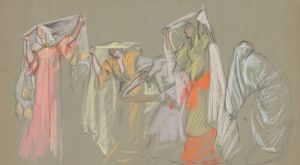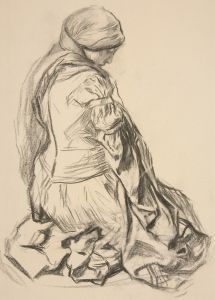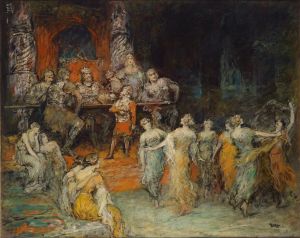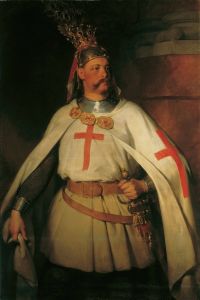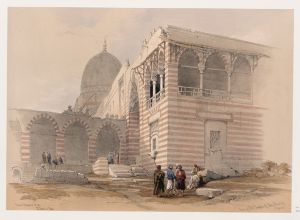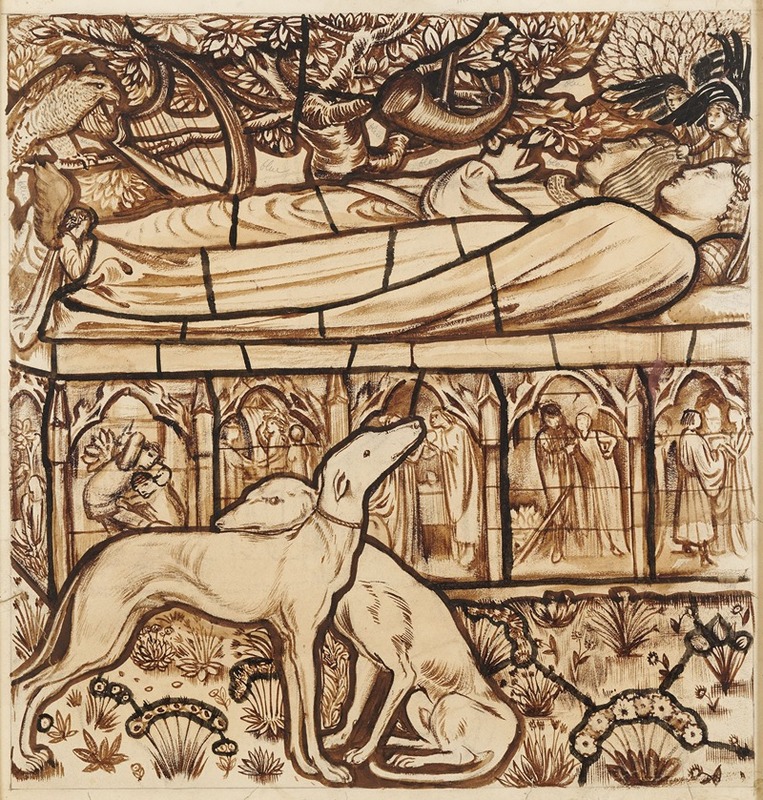
The Tomb of Tristram and Iseult
A hand-painted replica of Sir Edward Coley Burne-Jones’s masterpiece The Tomb of Tristram and Iseult, meticulously crafted by professional artists to capture the true essence of the original. Each piece is created with museum-quality canvas and rare mineral pigments, carefully painted by experienced artists with delicate brushstrokes and rich, layered colors to perfectly recreate the texture of the original artwork. Unlike machine-printed reproductions, this hand-painted version brings the painting to life, infused with the artist’s emotions and skill in every stroke. Whether for personal collection or home decoration, it instantly elevates the artistic atmosphere of any space.
"The Tomb of Tristram and Iseult" is a painting by the British artist Sir Edward Coley Burne-Jones, a prominent figure in the Pre-Raphaelite Brotherhood, a movement that sought to return to the detail, intense colors, and complex compositions of Quattrocento Italian art. Burne-Jones, known for his romantic and mythological subjects, created this work in the late 19th century, a period when he was deeply engaged with themes from medieval literature and legend.
The painting depicts the tragic love story of Tristram (also known as Tristan) and Iseult (or Isolde), a narrative that has been retold in various forms throughout European literature. This story, rooted in Celtic legend, tells of the doomed romance between the knight Tristram and the Irish princess Iseult. Their love is often portrayed as both passionate and destructive, ultimately leading to their untimely deaths.
Burne-Jones's interpretation of this tale is characteristic of his style, which often features elongated figures and a dreamlike atmosphere. The composition of "The Tomb of Tristram and Iseult" is likely to reflect his interest in creating a sense of narrative and emotion through visual means. His use of color, light, and form would have been intended to evoke the poignant and melancholic nature of the story.
The painting is part of Burne-Jones's broader exploration of medieval themes, which was influenced by his collaboration with other members of the Pre-Raphaelite Brotherhood and his friendship with figures like William Morris. Morris, a designer and writer, shared Burne-Jones's fascination with medieval romance and chivalry, and their partnership often resulted in artworks that celebrated these themes.
Burne-Jones's work, including "The Tomb of Tristram and Iseult," is noted for its meticulous attention to detail and its ability to convey complex emotional states. His paintings often feature rich, jewel-like colors and intricate patterns, which contribute to their otherworldly quality. This particular piece would have been designed to draw viewers into the world of the legend, inviting them to reflect on the nature of love, fate, and mortality.
The painting's reception at the time of its creation would have been influenced by the Victorian fascination with medievalism and the romanticization of the past. Burne-Jones's work was popular among those who appreciated the aesthetic and philosophical ideals of the Pre-Raphaelite movement, which sought to challenge the conventions of contemporary art by looking to earlier periods for inspiration.
Today, "The Tomb of Tristram and Iseult" is appreciated as part of Burne-Jones's legacy, which continues to influence artists and captivate audiences with its beauty and emotional depth. His ability to blend narrative and visual art remains a significant aspect of his contribution to the art world, and his works are studied for their innovative approach to storytelling through painting.






